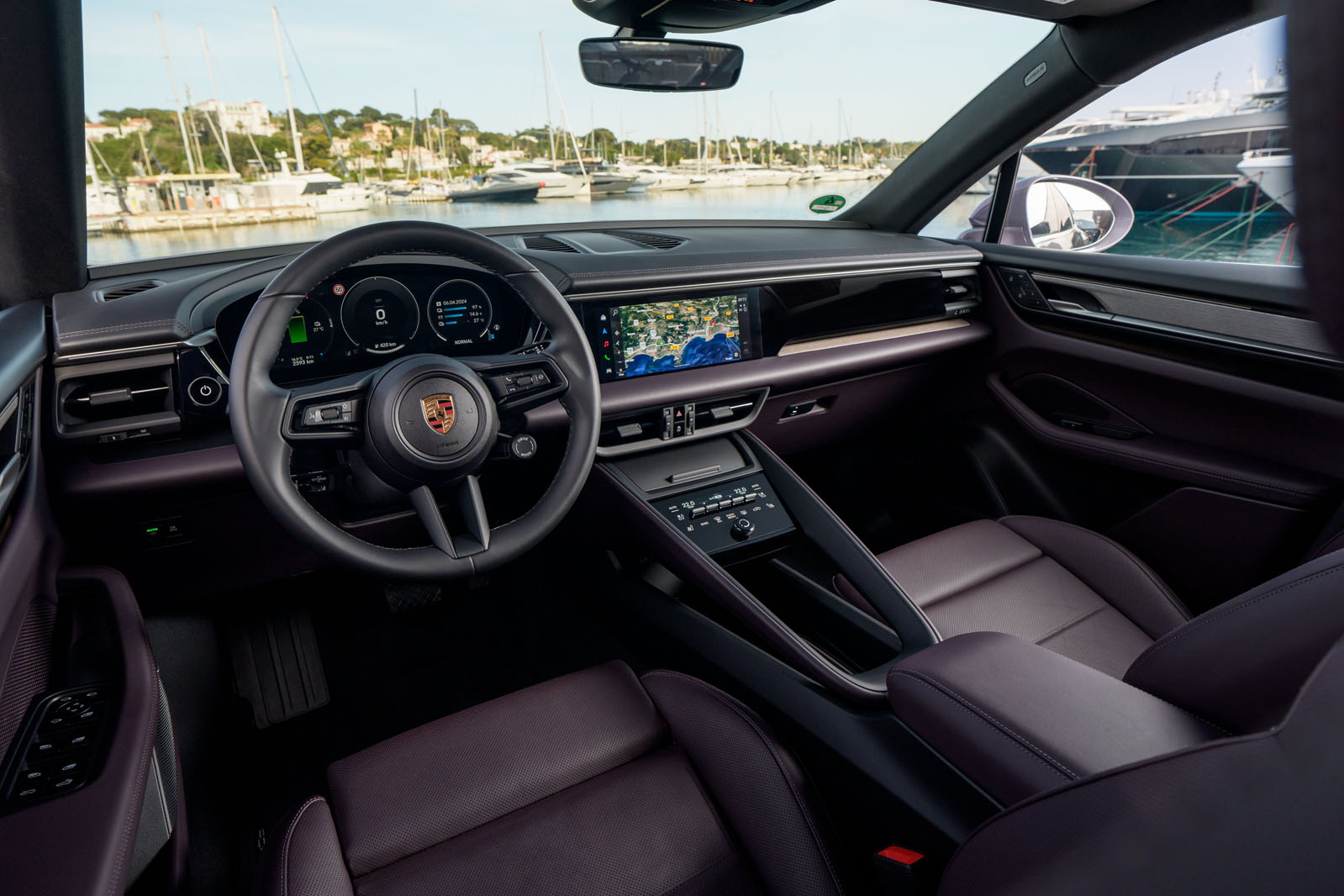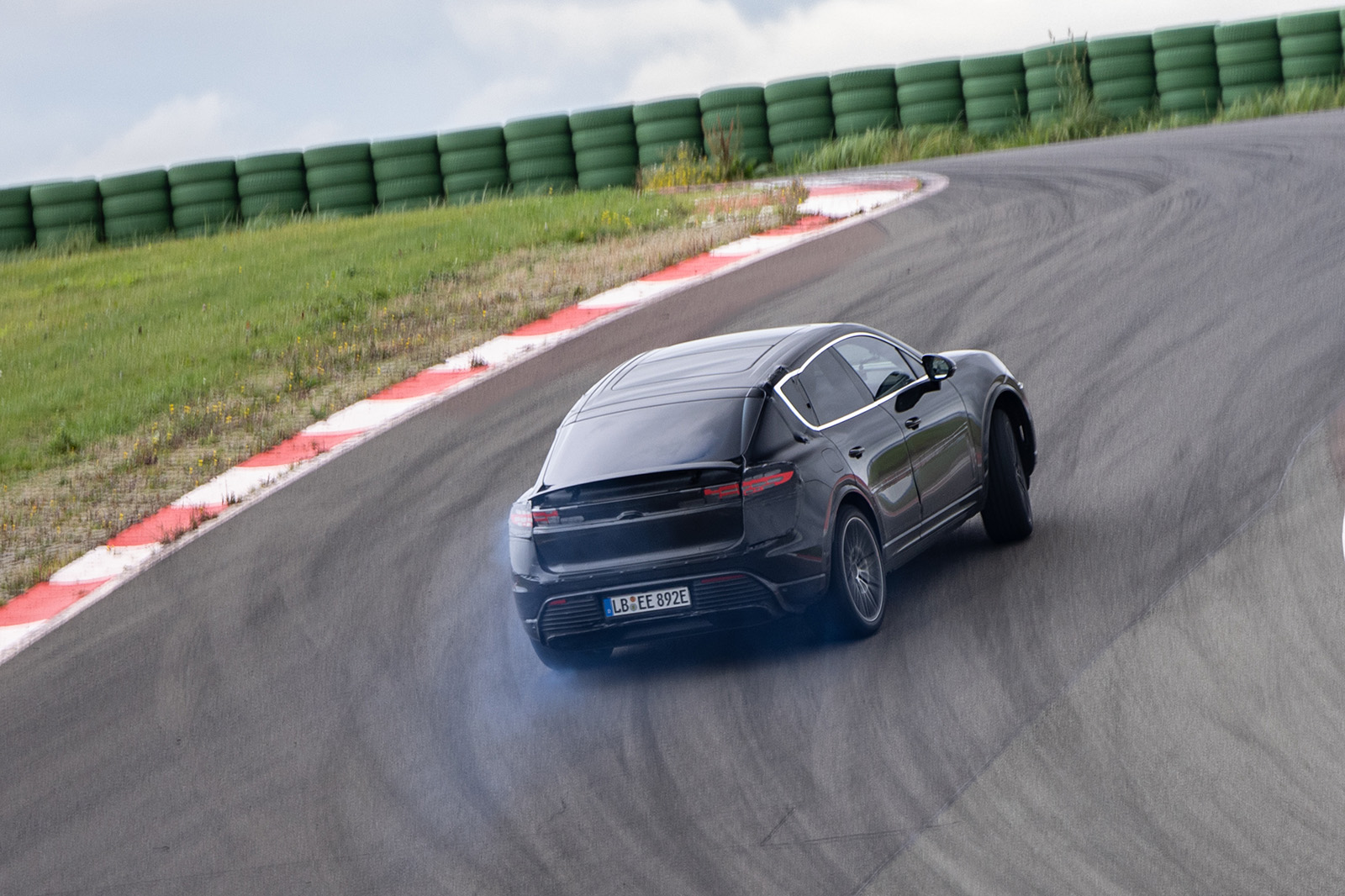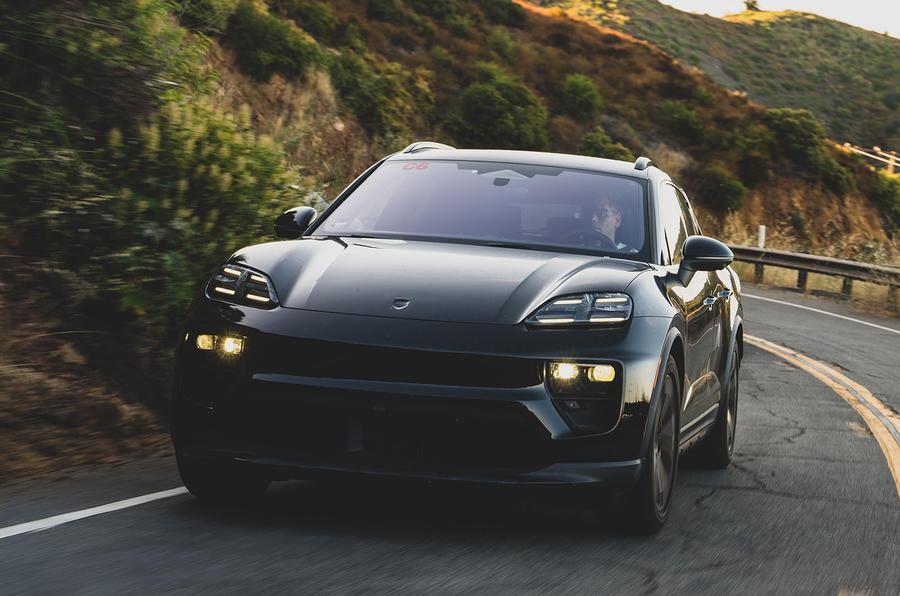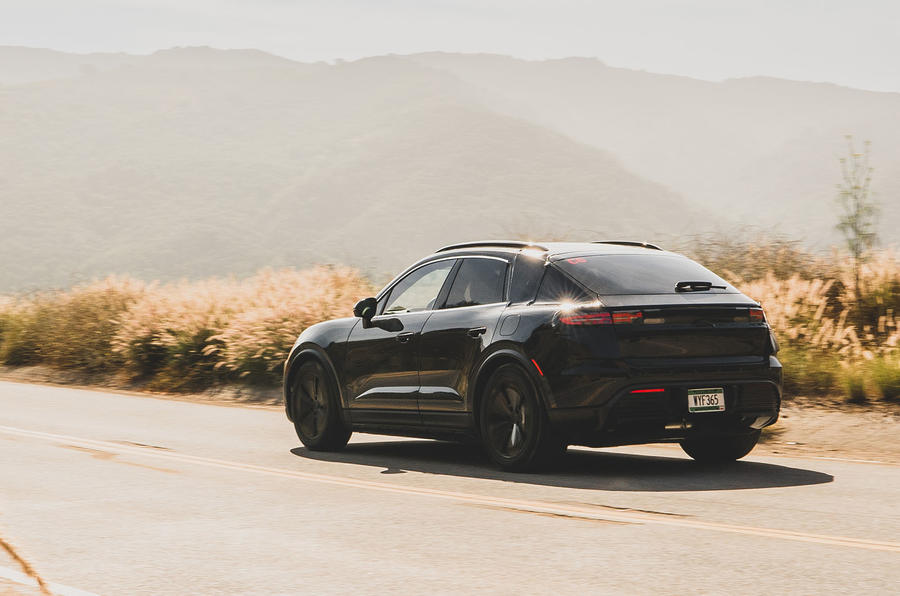Drivability in everyday environments is first-rate. The Macan's combination of steering speed, weight and accuracy, the gentle heft in its intuitively sprung accelerator pedal and the way in which it takes up what limited roll is permitted result in a cohesive whole.
This makes the car, which is 103mm longer and 15mm wider (but also 2mm lower) than the ICE model, supremely easy to place and control.
Some may rue the lack of adjustable regenerative braking modes. But for this tester, the Macan Electric's approach of freewheeling as a default and only slowing with pressure on the brake pedal (though the slowing itself is largely via the motor, not brake pads) has an enjoyable consistency and purity about it.
At some point, however, you will want to uncork the thing. How does the 883lb ft of the Turbo feel? Unsurprisingly quite lively, as the 3.3sec 0-62mph time suggests. It's not as discombobulating as you might expect, though, and there's little to no drama in the form of wheelspin or, even more impressively, torque-steer.
The car's new electronic architecture allows the torque-split between the axles to adjust in response to wheel slip in just 10 milliseconds, and you can believe it.
Combine this with remarkable discipline in terms of vertical body movements and wheel control, plus that accurate steering, and you have the makings of one of the fastest point-to-point passenger cars around.
For those who dream of Alpine switchbacks, the differential in the Turbo is worth having too. In slower bends, it lends neatness and predictability to the car's joyfully easy-access throttle-adjustability, which on first impressions would seem to be a match for the hot Hyundai Ioniq 5. Or, indeed, a BMW M5.
The 400bhp 4 is less theatrical but, for most people, offers more than enough pace and composure. In fact, the 4 we tested, on air suspension and the basic 20in wheels, was a real star.
It's less tightly wrought than the Turbo, on good roads finding a flow more easily, and if anything this makes the Macan Electric's rear-biased torque-split shine through more clearly in the handling. If it's true that the Macan Electric's 2.3-tonne mass never truly leaves your consciousness, it's also true that this weight is supremely well managed, and in the sensibly powered 4 especially you'll find a car that can really be enjoyed and even goaded a little on the right road. It reminds me a little of Audi's RS3.
If there's a chink the armour of a what is a roundly convincing family performance EV - one that relative to rivals is also quite keenly priced, if you're judicious with your options spend - it concerns ride quality. The Macan Electric's motorway gait is superbly supple but there's a reactivity on smaller, choppier routes that might prove tiring in the UK. This is more pronounced in the Turbo, but the smaller-wheeled 4 isn't immune to restlessness. Both stop short of feeling brittle, mind.



































